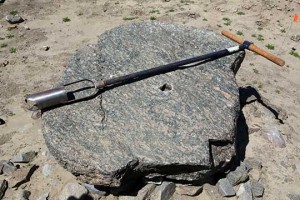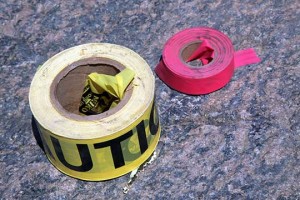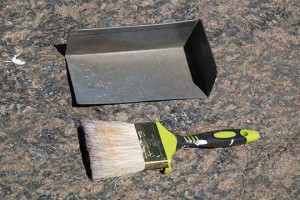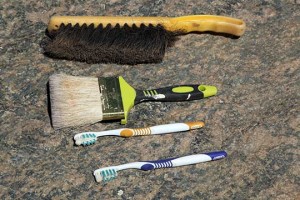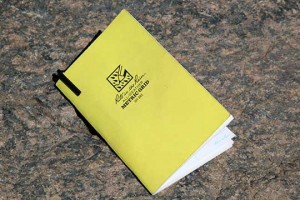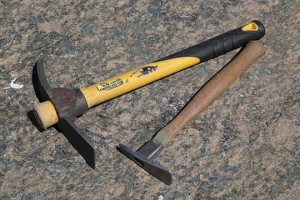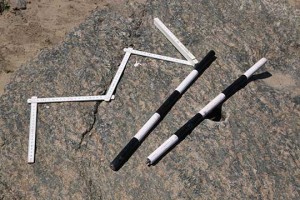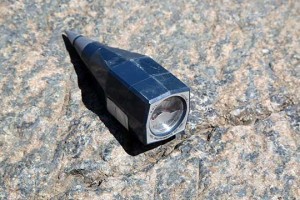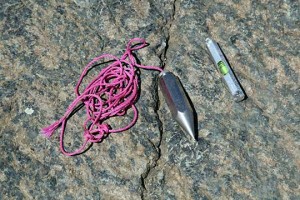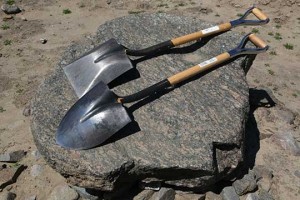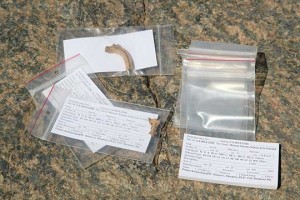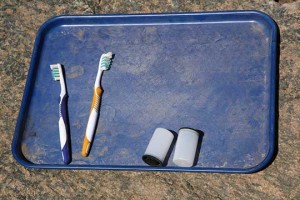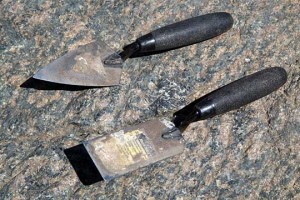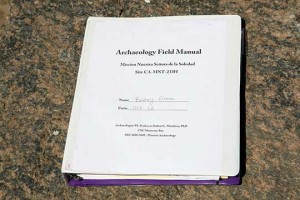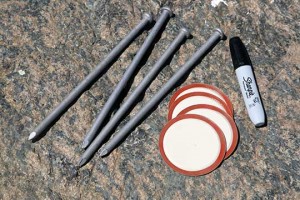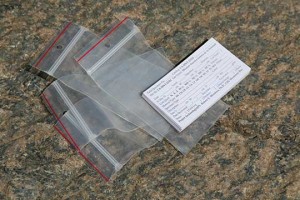Bucket Auger
In situations where an archaeological site is buried deep beneath the surface due to floodplain situations a bucket auger is necessary. A bucket auger may be lowered up to 21 feet using long sections of pipe to reach an archaeological site.
Caution Tape / Survey Tape
Caution Tape, or barrier tape is colored tape which is brightly colored and usually written with the words “Caution” or “Danger” in large lettering. This tape is used to warn and prevent people to come in contact with the hazards contained within the tapes interior. Survey tape or flagging tape is used on an archaeological site to map out the perimeters of soil that are to be excavated.
Dust Pan and Brush
A dust pan is used for the removal of excavated soil from a unit of excavation. A brush helps with the process of putting the earth into the dust pan.
Excavation Brushes
There is a wide array of brushes used to excavate archaeological material. Each has its unique purpose and ability. A hand brush has soft bristles and a strong wooden handle. It is used for to brush back loose sand and soil. The short but strong handled general purpose hand brush has medium stiff bristles. It is used for cleaning the debris off of harder surfaces. The toothbrush is used to clean small areas with precision as to provide delicate care to the archaeological object.
Field Notebook
A field Notebook is used by archaeologists to record information about the dig site which they observed and gathered.
Field Tools
Many tools are used by archaeologists to unearth artifacts and specimens.
Mattock
A Mattock is used for digging and chopping to create a proper hole for excavation.
Metric Stick
A metric stick is used for measuring distances and plotting squares where excavation is to occur.
Munsell Soil Color Chart
The Munsell soil color chart allows for people to compare soils from anywhere in the world. The system is comprised of three components: value (light or dark), hue (specific color), and chroma (intensity of color).
pH Meter
A pH meter is the most precise tool for measuring the pH levels in soil. Less than 7 is acidic, 7 is neutral, and above 7 is alkaline or basic.
Photo board
A photo board is used for designating the unit, the site, the stratigraphic level and the date of the excavation photo.
Plumb-bob and Line level
A Plumb-bob is a weight attached to a string which acts as a vertical reference line for measuring and constructing vertical structures. A line level Is used as a horizontal reference for measuring horizontal surfaces or structures.
Rock-Color Chart
A rock-color chart is used for assigning color names to rock samples. This chart gathers the value (light or dark), hue (specific color), and chroma (intensity of color) of the rock sample.
Shovel
A shovel is used to remove large amounts of soil from the earth when excavating a site.
Sledge Hammer and Unit Stakes
A sledge hammer is used to pound unite stakes into the earth. The unit stakes provide an attaching point for the string around the perimeter of the archaeological site.
Soil Bucket
A Soil bucket has a variety of uses. It is used to transport soil to the sifter, to carry tools, and to move soil out of the excavation area.
Specimen Bags
Specimen bags are used to hold and identify archaeological objects found while excavating.
Specimen Tray
A specimen tray is used to hold small objects that can be lost easily.
Trowels
A trowel is an archaeologist’s most iconic and most frequently used tool. A trowel is used when excavating with a shovel becomes either impossible or hazardous to damaging archaeological material. There are both pointed and square ended trowels used by preference of the archaeologist.
Tape Measure
For archaeologists it’s very important to measure and record everything they find. Measuring the depth of soil they uncover. This is helpful for knowing precisely how far from the surface they have dug.
Unit Binder
A unit binder is used by archaeologists to record General Project Information, General Field Notes, Specific Excavation Records, Feature Records, Mapping and Land-Survey Notes, Photo Log, Bag Inventory, Soil, Metric, and Flotation Sample Inventory.
Unit Stakes, Mason jar lids, and Marker
A Mason jar lid is used as a site unit marker to record the archaeological site.
Ziploc Bags
Ziploc bags are used to hold archaeological material.


